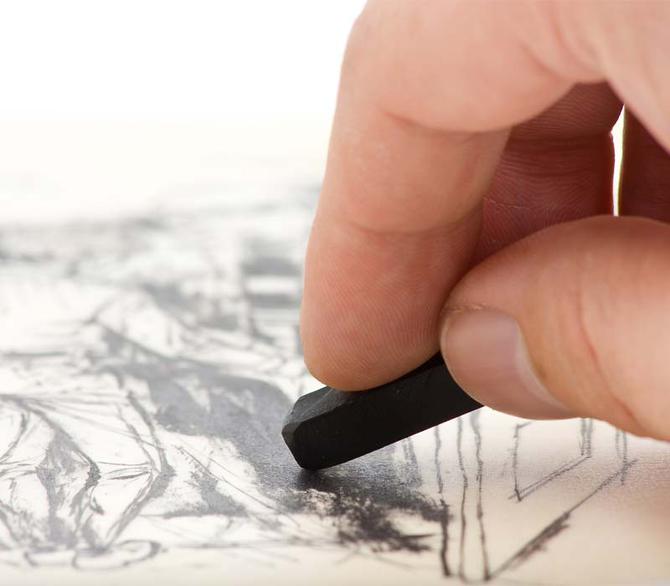These are just some of the concepts that international artists have explored and shared with the public as Artists-in-Residence with the School of Creative Arts
While Melbourne and Sydney are often be referred to as the cultural hubs of Australia, regional artists and educators are pushing back on the idea that the exciting work only happens in the big smoke. They’re using the arts to bring a boost to smaller towns.
North West Tasmania, which captures the sixth-poorest electorate in the country, is one target of these cultural regeneration approaches. Since 2015, residency programs set up by the University of Tasmania have been bringing Australian and international artists to the Burnie and Inveresk campuses.
Highlights of the program have included Swedish artist Trygve Luktvasslimo, who has performed and exhibited in museums, galleries, festivals and clubs, and Indian contemporary artist Deepti Gupta.
Each artist is awarded $5,000 and participates in a residency-based project to work with the community, creating an exhibition of works for the University’s Academic Gallery.

The work in the northwest is part of a state-wide movement of investment in regional arts, establishing new opportunities for collaboration, exhibition cultures, and encouraging involvement in state-wide festivals and cultural events.
More than 50 events in the 2015 Ten Days on the Island festival were curated, co-produced and participated in by University researchers, including shows with focuses on science (Lucy Bleach’s ‘Superslow’ sculptures, which altered during the course of the exhibition), gender (a group show of 20 women in ‘Mad Women in the Attic’), landscape (charcoal drawings of North West Tasmania by David Edgar).
Many University researchers also provide industry connections through positions in arts groups outside the University—for example at the Tasmanian Symphony Orchestra and Contemporary Art Tasmania. Dr Mary Scott has been supporting regional events recognising and supporting Indigenous Australian arts through her years of board membership with Arts Tasmania.
Also:
- A place to work: More than 20 exhibitions of touring shows, externally curated original exhibitions, and internally generated group shows made use of the refurbished Academy Gallery in Inveresk between 2014-2016. It and the exhibition and workshop space in Burnie were redeveloped to support regional artists outside Hobart. They also hosted the 2015 exhibition by members of the Tasmanian Art Teachers Association (the first externally curated exhibition in several years for some of the teachers).
- The Hedberg: a garage built in 1925 and the 180-year-old Theatre Royal (the country’s oldest continually operating theatre) are at the heart of a new $90 million cultural arts precinct being built in Hobart. The precinct, to be completed in early 2019, is named the Hedberg, in honour of the brick garage it incorporates—once the Hedberg Brothers garage. The Hedberg will bring in new cultural partners and provide new performance venues and an international research institute. It’s funded by the University with the Commonwealth and Tasmanian governments.
- Furthering musical education - beyond the university walls: musicians can access the University’s Conservatorium of Music’s facilities for rehearsals, recording and performances. As the only tertiary music education provider in Tasmania, the Conservatorium also puts on more than 100 free concerts and events every year, runs non-traditional award programs and facilitates mixed ensemble concerts of educators, students, and locals.
Interested in conducting your own research? Apply now to become a research student.
Interested in partnering with the University of Tasmania? Find out more here.